Abstraction and Color
1/62
There's no tags or description
Looks like no tags are added yet.
Name | Mastery | Learn | Test | Matching | Spaced |
|---|
No study sessions yet.
63 Terms
Key ideas of Abstract Expressionism
Rejected figurative imagery and traditional pictorial space
Unconsious/Jungian Archetypes
NYC becomes the center of the “Art World” for the first time
Distinct styles but common ideas
Action Painting (capturing energy of the work)
Color Field Painting/Hard Edge
Impact in Cold War
non objective
Background of Abstract Expressionism
Hitler Defeats France in 1940
(artists did not want to be there- fled to New York)
Existentialism, not Essentialism is a guiding philosophy (debating art and philosophy)
Roosevelt’s WPA: The Federal Art Project helps support artists
The New York School
Harold Rosenberg: “The American Action Painters”
Jackson Pollock
Movement: Abstract Expressionism, specifically Action Painting.
Technique: Developed the "drip technique" where he would lay large canvases on the floor and pour, drip, splatter, and fling paint from cans, sticks, and other unconventional tools.
One: Number 31. 1950, Enamel on canvas
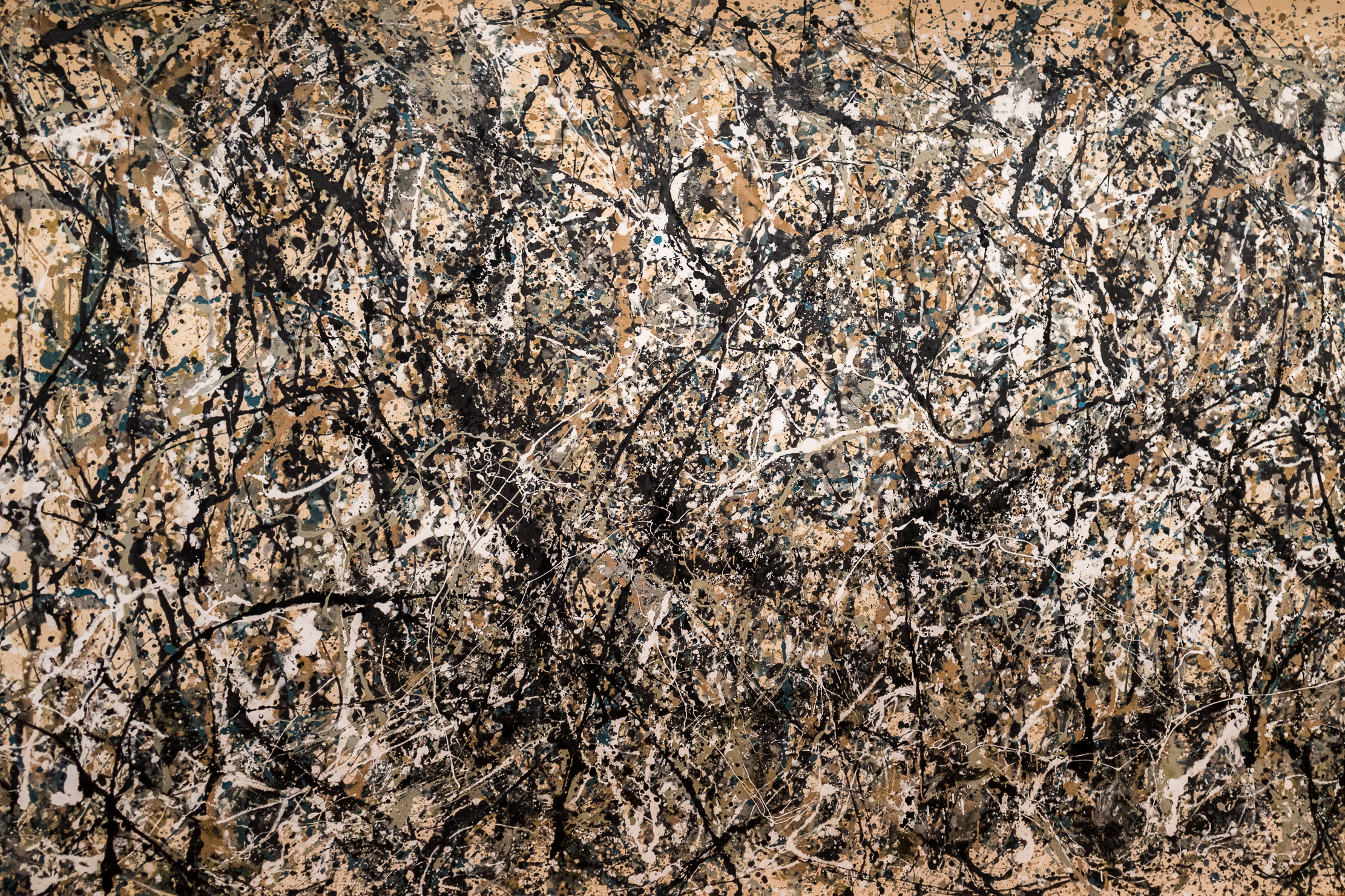
Arshile Gorky
-use of color
-figure ground relationship
-sense of space; even when flat
The Liver is the Cock's Comb (1944), oil on canvas
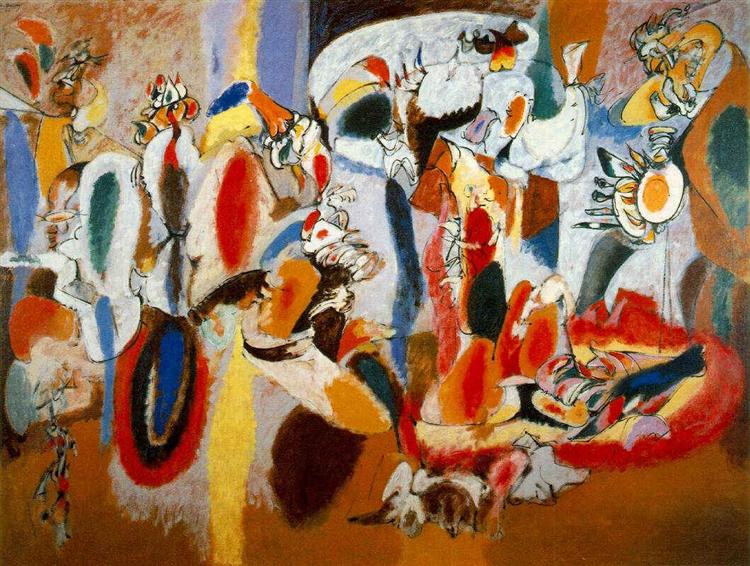
Lee Krasner. Untitled. 1949. Acrylic on paper
-one of the first gen Abstract
-changed name (Lena) to get more exhibits
-married jackson
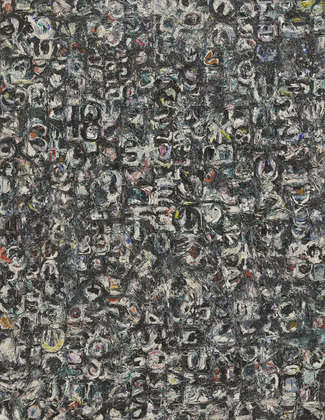
William de Kooning
smear quality
had a process where he would put paint on then smear it off; the history of the piece
faces
was not traditional
Willem de Kooning- Excavation, 1950 Oil on canvas
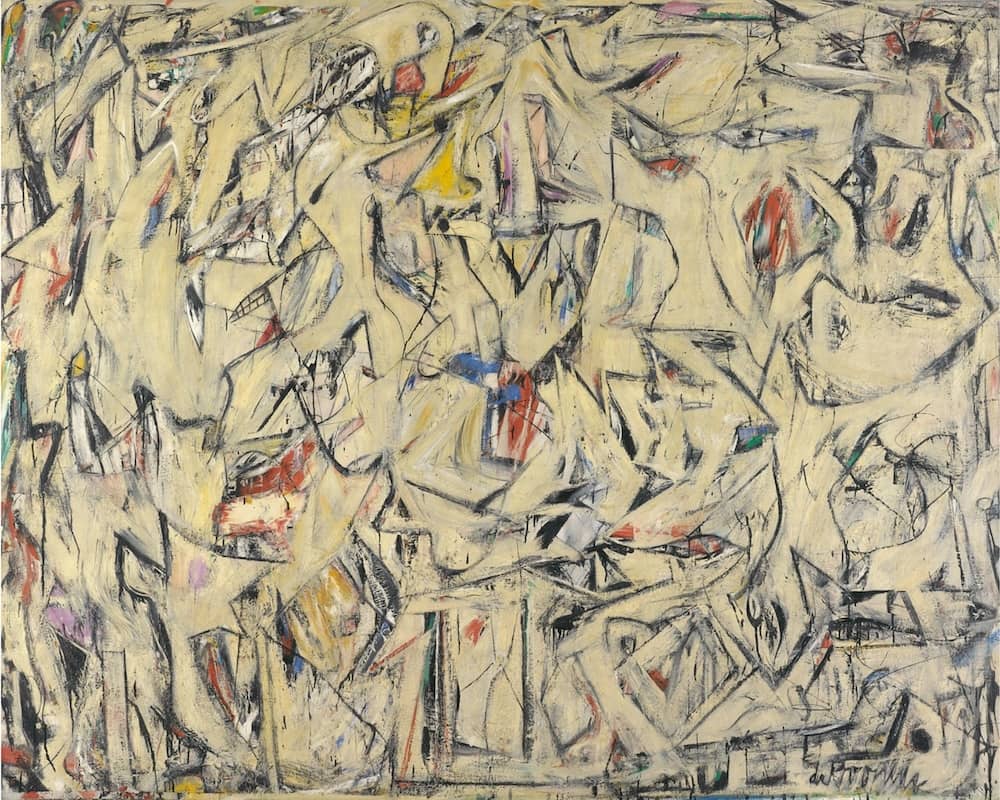
Grace Hartigan.
-One of the most successful abstract expressionists
-art in MOMO
-words on paintings
-layers
The Oranges, No. 1 (Black Crows).
1952.
Oil on canvas
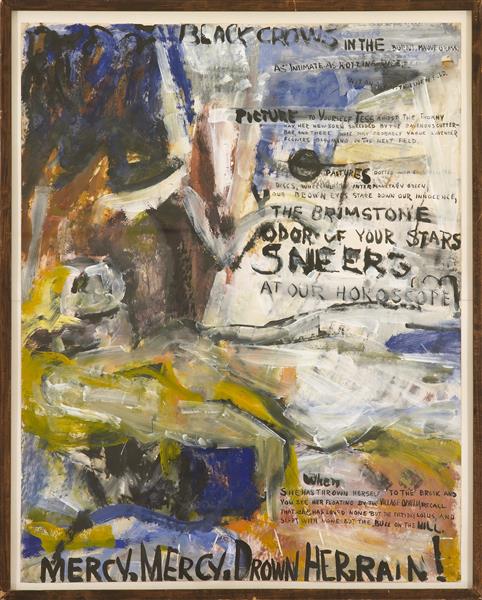
Franz Kline. Chief
-opaque projector
-house paint
-black and white
- 1950. Oil on canvas

Joan Mitchell
-tree
-works from memory
-came from money
-orange purple and green
-Hemlock. 1956. Oil on canvas
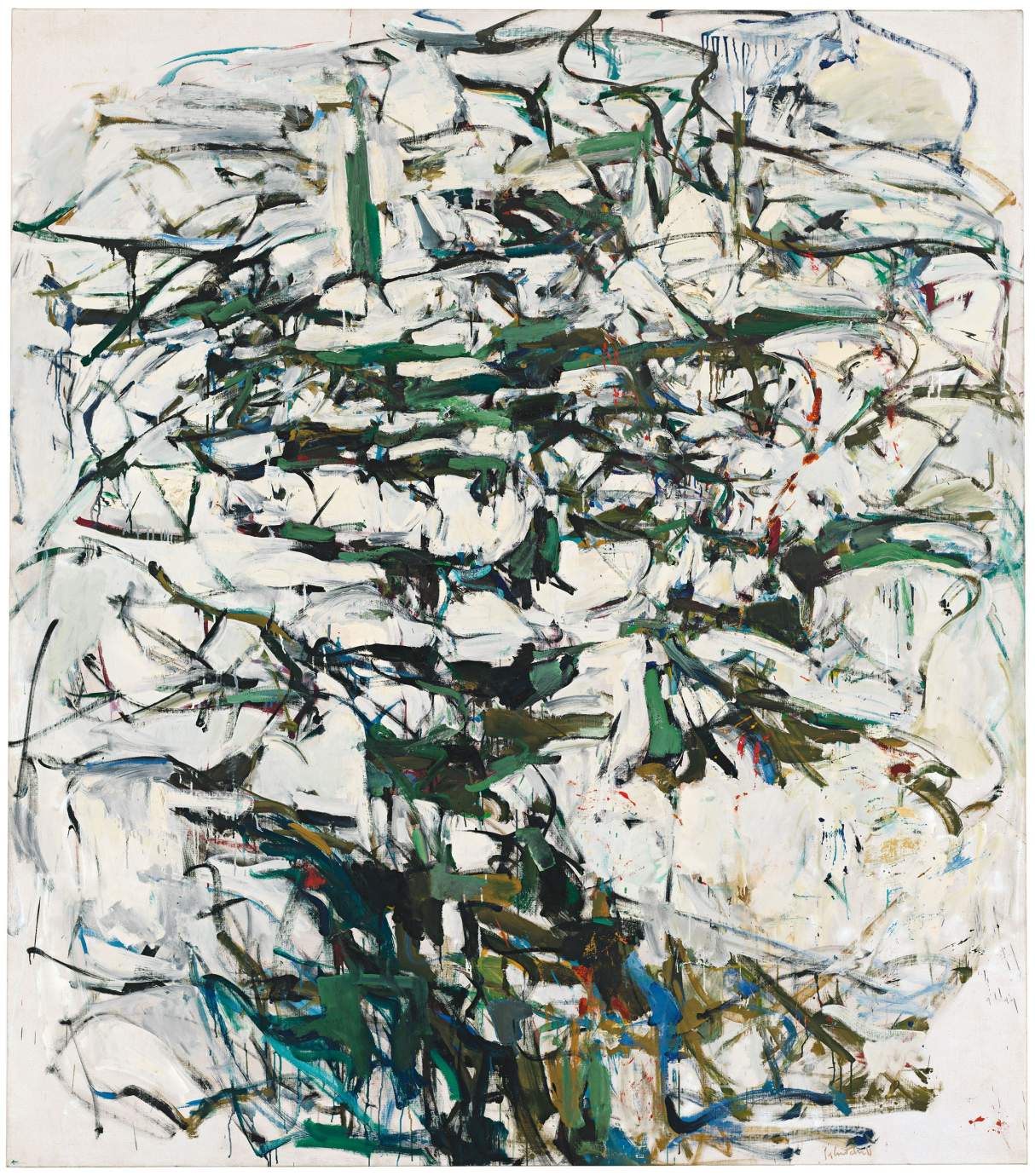
Barnett Newman
-giant
-wrote many books
-purity by simplification
-standing in front can evoke emotions
-- Vir Heroicus Sublimis, 1950/51, oil on canvas
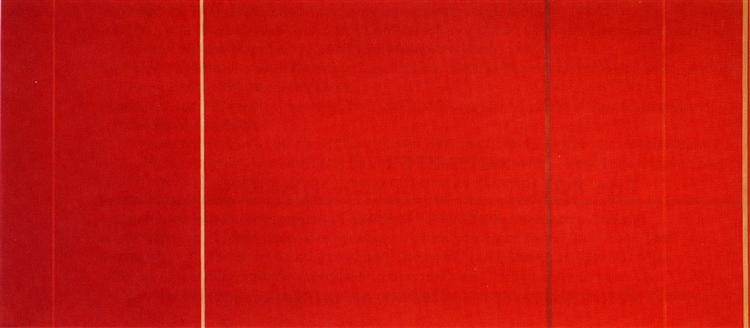
Helen Frankenthaler
-best known for her innovative "soak-stain" technique. She would pour heavily thinned oil or acrylic paints directly onto unprimed canvas, allowing the colors to soak into the fabric. This created luminous, fluid fields of color that blurred the lines between painting and canvas, resembling large-scale watercolors.
-Mountains and Sea, 1952, oil and charcoal on canvas
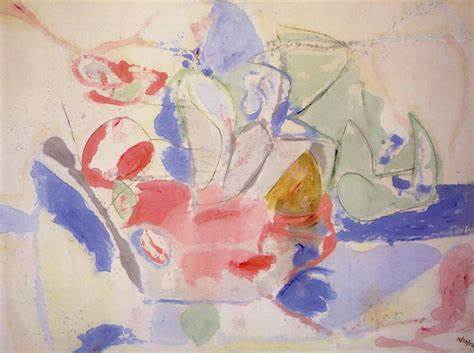
Mark Rothko
primary goal was to evoke profound emotional responses in the viewer. He famously said he was interested in "expressing basic human emotions—tragedy, ecstasy, doom."
The Sublime: His large, immersive color fields are often associated with the concept of the sublime, aiming to create a sense of awe and the infinite.
Direct Experience: He wanted viewers to have a direct, personal, and almost visceral experience with his paintings, free from intellectual interpretation or symbolic readings.
The "Drama" of Shapes: he considered the rectangular forms in his paintings as "performers" in a drama, capable of moving dramatically and expressing fundamental human experiences.
UNTITLED (YELLOW, ORANGE, YELLOW, LIGHT ORANGE) -
oil on canvas
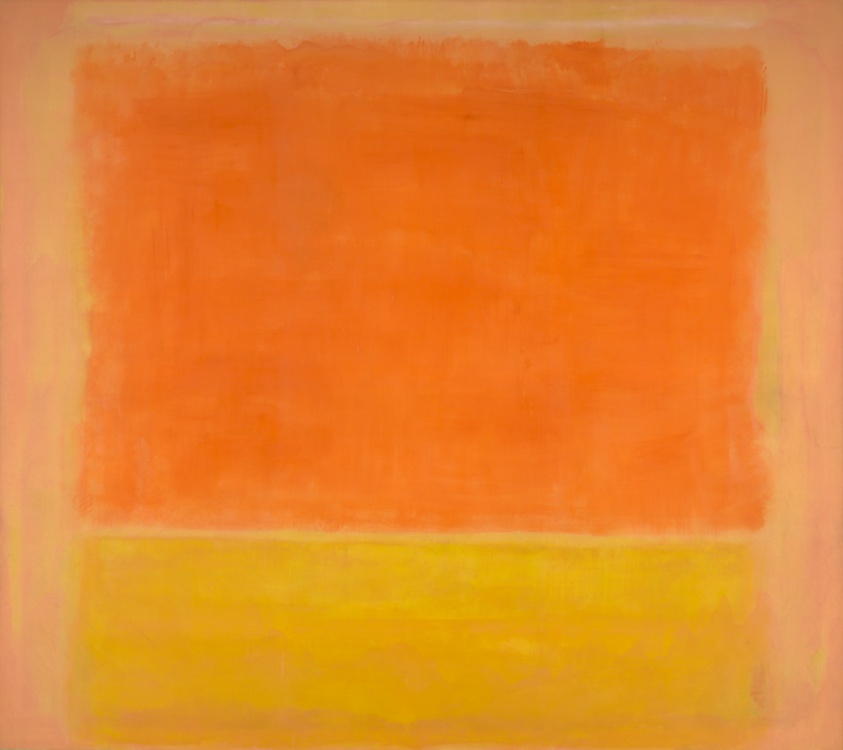
Abstract Expressionism
The Abstract Expressionists, also referred to as the New York School, were a group of artists centered in New York City in the 1940’s and 1950’s. Their paintings were often large-scale and some- times were made by dripping, pouring, and splattering paint. Abstract Expressionism was the first specifically American Art movement to achieve recognition world wide and placed New York City at the center of the art world; a position previously occupied by Paris before World War II. Although not all of the abstract expressionists works looked similar in style they shared a rebellious attitude and were the farthest thing from traditional art at the time.
Emulsion
An emulsion is a combination of two or more liquids that do not blend easily on their own, such as oil and water. A common example of an emulsion is a vinaigrette salad dressing, in which you might use egg yolk to keep the vinegar and olive oil from separating. Similarly, painters can use egg yolk to emulsify oil paint and water.
Action Painting
term was coined by the American critic Harold Rosenberg in 1952. Rosenberg's critique shifted the emphasis from the object to the struggle itself, with the finished painting being only the physical manifestation, a kind of residue, of the actual work of art, which was in the act or process of the painting's creation. This spontaneous activity was the "action" of the painter, through arm and wrist movement, painterly gestures, brushstrokes, thrown paint, splashed, stained, scumbled and dripped.
New York School
another name for the artists of the Abstract Expressionist movement due to the fact that most of them worked out of New York city.
Enamel paint
are household and automobile paints that are formulated to be very fluid. They are typically opaque and rich in pigment, since they are designed to cover a surface in a single coat of paint. can use an array of different binders that include alkyd (a modified linseed oil), acrylic, latex, and oil. Abstract Expressionist artists such as Jackson Pollock and Willem de Kooning were among the first to regularly use these paints in making works of art.
Palette knife
is a type of spatula typically used to mix paint on the palette. It can also be used to apply paint directly on the canvas and to remove it from the canvas.
Color Field
a style of abstract painting that is characterized primarily by large fields of flat, solid color spread across or stained into the canvas; creating areas of unbroken surface and a flat picture plane. The movement places less emphasis on gesture, brushstrokes and action in favour of an overall consistency of form and process.
Medium
can also refer to what carries a paint's pigments, and is also called a vehicle or a base. The medium is what determines what kind of paint is produced. A painter can mix a medium with its solvents, pigments and other substances in order to make paint and control its consistency. A variety of mediums are available that provide a matte, semi-gloss, or glossy finish.
binder
The material used in paint that causes pigment particles to adhere to one another and to the support; for example, linseed oil or acrylic polymer.
pigment
- Any coloring agent, made from natural or synthetic substances, used in paints or drawing materials.
Solvent
A (usually) liquid substance which is able to solve (dissolve) another substance, either for cleaning, thinning, mixing, or some particular step in an art technique. Common solvents include water (especially when soapy), turpentine and paint thinner, (denatured) alcohol, acetone, or lacquer thinner.
Surface
The tactile quality or texture of a of a painting
gesture
The act of making a mark with relatively loose arm movements
Non-representational or “Non-objective”
Art without reference to anything outside itself-without representation. Also called nonobjective-without recognizable objects.
Abstraction
- Imagery which departs from representational accuracy
“All Over” Composition
means that every part of the canvas is equal to every other, and all are on the same plane.
“Push Pull”
technique developed by Hans Hoffman that proved that the illusion of space, depth, and even movement on a canvas could be created abstractly using color and shape, rather than representational forms.
Turpentine Burn
is made by soaking a rag in solvent and scrubbing the canvas directly. This technique removes paint and leaves a stain on the canvas.
Viscosity
the thickness of a liquid. Low- ______ liquids are very fluid (such as water) while high-_____ liquids are quite thick (such as molasses). The viscosity of oil paints is usually reduced by adding binder (such as linseed oil) and/or solvent (such as turpentine). At a lower _____, paint can be brushed onto the canvas more freely and quickly.
Acrylic
A clear plastic used as a binder in paint and as a casting material in sculpture.
Avant-garde
means "advance guard" or "vanguard". Refers to people or works that are experimental or innovative, particularly with respect to art, culture, and politics.
Stain Painting
A stain is a thinned paint made with a considerable amount of solvent. Stains are absorbed into the canvas, rather than remaining on its surface.
Clement Greenberg -
influential art critic who advocated Jackson Pollock and the color field painters like Clyfford Still, Mark Rothko, Barnett Newman, Adolph Gottlieb and Hans Hofmann.
Harold Rosenberg
influential art critic who preferred the action painters like Willem de Kooning, and Franz Kline, as well as the paintings of Arshile Gorky.
Carl Jung
the personal unconscious (containing an individual's repressed memories and experiences), there exists a deeper layer shared by all humanity, inherited from our ancestral past. It contains universal themes and patterns called archetypes.
Jean Paul Sarte
He argued that humans are born without a predetermined nature or purpose
Color
Is visible light that is reflected.
Hue
Another name for color. Hue describes a color in its raw form on the color wheel.
Primary Colors
Red, yellow, and blue. These colors can make other colors when they are mixed together in different combinations.
Secondary Colors
Orange, green, and purple. These are made by mixing two primary colors together. (Example: red + yellow = orange).
Tertiary colors
Third level colors, which are made by mixing a primary and secondary color together. (Example: red + orange = red-orange).
Chroma
Another name for color or pigment.
Value
The lightness or darkness of a color.
Tint
A lighter shade of a color; can be made by adding white to a hue.
Shade
a darker __ of color; can be made by adding black to a hue.
Tone
A color that is mixed with another hue to change it’s value or intensity.
Intensity
The brightness or dullness of a color. Another word for this is saturation.
Color wheel
The organized method of arranging colors as they appear on a spectrum.
Spectrum
: The order of colors as they appear in the rainboy, aka ROY G. BIV
Neutrals
White, gray, and black.
Color agent:
The actual pigmentation of a color.
Color effect
The way a color is perceived based on its environment or adjacent colors.
Triadic Scheme
:A triad describes any 3 colors that create an equilateral triangle on the color wheel. Using a triad can create a sense of harmony in your color scheme. Examples: • Primary colors: red, yellow, blue • Secondary colors: purple, orange, green • Tertiary colors: red-orange, yellow-green, blue-violet
Complementary Colors
Two colors that are directly across from each-other on the color wheel. When complementary colors are placed next to each other, vibrancy and a high contrast is created.
Analogous Colors
Approximately any three colors that are adjacent to each other on the color wheel. Example: red, red-orange, and red-violet. An analogous color scheme creates a sense of harmony and low contrast, using only 1 section of the color wheel.
Split-Complementary
This scheme involves the use of one hue, and the two colors adjacent to its complement. By using this scheme, you can a sense of contrast without the intensity of the basic complementary color scheme.
Monochromatic
This color scheme primarily uses tints, shades, and tones of only one hue.
Warm Colors vs. Cool Colors
Warm colors are on one half of the color wheel, and are usually associated with reds, yellows, and oranges. These colors tend to excite and pop-out in a picture. Cool colors are on the other half of the color wheel, and are usually associated with blues, greens, and violets. These colors tend to calm, and recede in a picture.
Simultaneous contrast
describes the tendency of a color to induce its opposite in hue, value, and intensity upon an adjacent color and be mutually affected in return.
Color Afterimage
Basically our minds and our bodies acclimate to overstimulation in many different ways. (sweating, pupil dilation, emotional acclimation)
In our attempt to acclimate, balance, or neutralize the red light hitting our eyes - our brains (the visual cortex) compensates by creating a perception the opposite…
Additive Colors
RGB are all _____ of the light spectrum and will create white light when you ADD them all together- when you combine pure red light with green light you create yellow wavelengths!